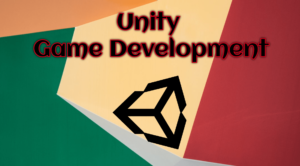Multiplayer gaming is one of the most popular forms of entertainment today, and Unity is one of the most popular game engines in the world. This allows game developers to create immersive, multiplayer experiences that keep players engaged and entertained. In this post, we’ll explore the basics of Unity Multiplayer Networking, as well as some advanced techniques, to help you create seamless multiplayer experiences that keep players coming back for more.
Contents
What is Unity Multiplayer Networking?
UnityMultiplayerNetworking is a set of tools and APIs that allow developers to create multiplayer games with Unity. It provides features such as network transport, matchmaking, and synchronization, enabling game developers to create seamless multiplayer experiences that run smoothly across multiple platforms and devices.
What are the benefits of Unity Multiplayer Networking?
UnityMultiplayerNetworking offers several benefits, including:
- Seamless multiplayer experiences: UnityMultiplayerNetworking allows developers to create multiplayer games that run smoothly across multiple platforms and devices.
- Low latency: The network transport system provided by UnityMultiplayerNetworking is optimized for low latency, allowing players to enjoy a lag-free gaming experience.
- Matchmaking: UnityMultiplayerNetworking provides a matchmaking system that allows players to find and connect with each other easily.
- Synchronization: UnityMultiplayerNetworking provides tools to help developers synchronize game data across multiple clients, ensuring that all players are seeing the same game state.
- Scalability: UnityMultiplayerNetworking is scalable, allowing developers to create multiplayer games that can accommodate thousands of players.
How does Unity Multiplayer Networking work?
Unity Multiplayer Networking works by using a client-server architecture. The server is responsible for managing the game state and communicating with the clients, while the clients are responsible for rendering he game and sending input to the server. UnityMultiplayerNetworking provides a network transport layer that handles the communication between the server and clients, as well as a synchronization framework that helps ensure that all players are seeing the same game state.
What are some best practices for Unity Multiplayer Networking?
Here are some best practices for UnityMultiplayerNetworking:
- Optimize for low latency: The key to a good multiplayer experience is low latency. Make sure you’re using the right network transport layer for your game and that your game code is optimized for low latency.
- Use interpolation and extrapolation: Unity Multiplayer Networking provides tools for interpolating and extrapolating game data to reduce the impact of latency on the player experience.
- Design your game for multiplayer: Multiplayer games require a different design approach than single-player games. Make sure you’re designing your game with multiplayer in mind from the beginning.
- Use prediction and reconciliation: Prediction and reconciliation are techniques for reducing the impact of latency on the player experience. Use them to make your game feel more responsive and reduce the occurrence of desynchronization issues.
What are some common challenges in UnityMultiplayerNetworking?
Here are some common challenges in UnityMultiplayerNetworking:
- Latency: Latency is the biggest challenge in Unity Multiplayer Networking. Make sure you’re using the right network transport layer and optimizing your game code for low latency.
- Synchronization: Synchronizing game data across multiple clients can be a challenge. Make sure you’re using the synchronization framework provided by UnityMultiplayerNetworking and designing your game with synchronization in mind.
- Security: Multiplayer games are susceptible to cheating and hacking. Make sure you’re using the security features provided by UnityMultiplayerNetworking, such as encryption
and authentication, to protect your game and its players.
What are some advanced techniques for UnityMultiplayerNetworking?
Here are some advanced techniques for Unity Multiplayer Networking:
- Server authoritative design: Server authoritative design means that the server is the ultimate authority on the game state, and the clients simply render the game and send input to the server. This approach can help reduce the occurrence of cheating and hacking in multiplayer games.
- Peer-to-peer networking: Peer-to-peer networking allows players to connect directly to each other, rather than going through a central server. This can help reduce latency and improve the player experience.
- Client-side prediction: Client-side prediction is a technique that allows clients to predict the game state based on their own input, rather than waiting for the server to send them updates. This can help make the game feel more responsive and reduce the impact of latency on the player experience.
Where can I learn more about UnityMultiplayerNetworking?
There are many resources available for learning about Unity Multiplayer Networking, including the official Unity documentation, forums, and tutorials. You can also find books and online courses that cover Unity Multiplayer Networking in more detail.
Conclusion
Unity Multiplayer Networking provides game developers with the tools and APIs they need to create immersive, multiplayer experiences that keep players engaged and entertained. By following best practices and using advanced techniques, you can create seamless multiplayer experiences that run smoothly across multiple platforms and devices. Whether you’re a seasoned game developer or just starting out, Unity Multiplayer Networking is a powerful tool that can help you take your game to the next level.

